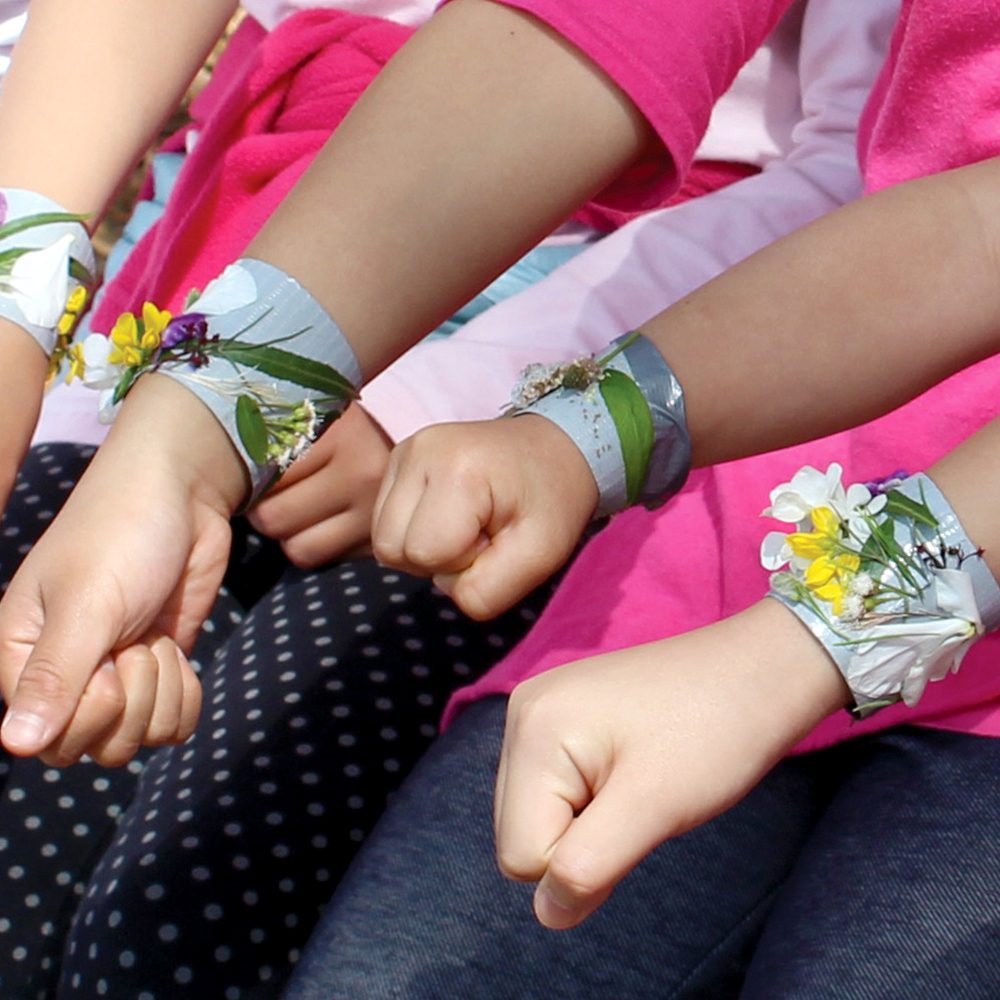
Resources
Nature Wristbands
Go on a nature walk and collect materials to create a wristband! On an outdoor walk, look for items that have fallen to the ground like leaves, flower petals, and sand to design and decorate the wristband. This activity helps children practice the act of discovery, an outlet that leads to creativity.
- Painter’s tape, masking tape, or duct tape
- Scissors
- Natural materials like leaves, flower petals, and grass
- Choose an outside place to explore. Go on a nature walk.
- Cut a piece of tape that wraps around your wrist comfortably, plus an extra inch or two.
- With the sticky side up, wrap the tape around your wrist and secure the ends together.
- During the nature walk, look closely for objects to decorate the wristband with, like leaves, flower petals, sand, or blades of grass. Think creatively about ways to make new patterns with pieces of the natural world. Use items that have already fallen to the ground like leaves, flower petals, etc. Collect unusual colors or shapes for the wristband.
- Press the natural materials into the tape to make a nature wristband.
- Show off the wristband!
- Select a theme for the wristband. For example, only collect and use items that grow from the ground, or items that are yellow.
- Make a wristband for a friend. Think about what they might like on their wristband.





